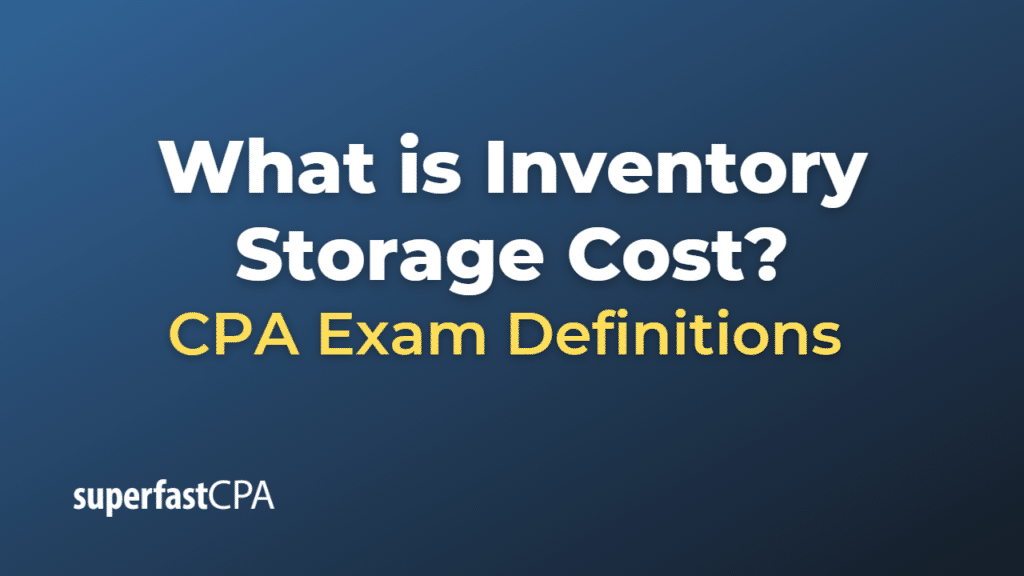Inventory Storage Cost
Inventory storage cost refers to the expenses associated with storing goods or materials until they are sold or used. These costs are a significant part of the total inventory carrying costs and are often calculated on a per unit basis.
Inventory storage costs typically include the following components:
- Warehouse or storage space cost: This could be rent, mortgage, or property taxes if the company owns the space.
- Utilities: This includes electricity, heating, cooling, and other utility costs associated with maintaining the warehouse or storage space.
- Security: This includes expenses related to safeguarding the inventory, such as security personnel, cameras, alarms, locks, etc.
- Insurance: Insurance costs to cover potential damage, loss, or theft of inventory.
- Equipment and Maintenance: Costs related to equipment used for storing and moving inventory (like forklifts, shelving), and their maintenance expenses.
- Labor: The cost of personnel involved in managing the inventory, including receiving, organizing, maintaining, and picking inventory for orders.
- Inventory Service: This includes costs associated with inventory management systems, inventory count, or audit expenses.
- Obsolescence and deterioration: Over time, some goods might become obsolete or deteriorate while in storage, leading to costs associated with waste and disposal.
These costs can add up, and managing them efficiently is crucial for a company’s profitability. Businesses often strive to minimize their inventory storage costs through effective inventory management strategies, such as just-in-time inventory, dropshipping, cross-docking, or through adopting advanced inventory management technologies.
Example of Inventory Storage Cost
Let’s consider a furniture manufacturing company as an example:
Suppose the company rents a warehouse for $10,000 per month to store its inventory of wood, fabric, and other raw materials, as well as the finished furniture pieces awaiting shipment. The monthly utility costs for the warehouse, including electricity, heating, and cooling, come up to $2,000.
They also pay $1,000 per month for security services, which include surveillance cameras and security personnel. The insurance costs to cover potential damage or loss of inventory amount to $500 per month.
For warehouse operations, they have forklifts for moving the heavy furniture pieces around, which costs them $1,500 per month for leasing and maintenance. They employ two full-time warehouse workers, whose combined monthly salaries are $6,000.
Additionally, they use an inventory management software to keep track of the stock levels, which costs $200 per month. And, they lose around $500 worth of materials and products each month due to deterioration and obsolescence.
If we add up all these costs, the total monthly inventory storage cost for the company comes to $21,700.
Now, if the company typically stores 1,000 units of furniture in the warehouse each month, we could calculate the storage cost per unit by dividing the total storage cost by the number of units, which would be $21.70 per unit ($21,700 / 1,000 units).
Understanding this cost per unit is important for the company when setting its product prices and managing its inventory levels. It might influence decisions such as whether to produce more units of furniture ahead of time or produce them on demand to minimize storage costs.













